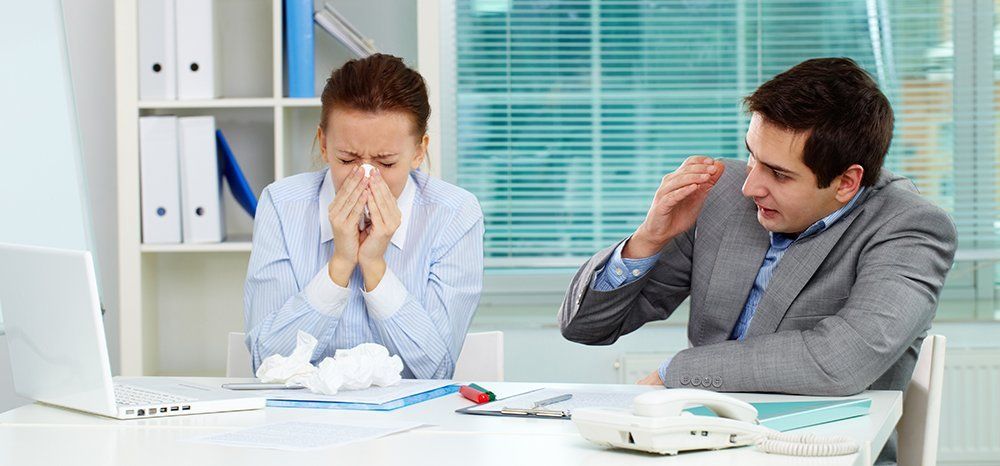Preventing Back Pain & Injury

Heavy lifting, repetitive movements or sitting at a desk all day can take a toll on your back. Get the facts about back pain and how to prevent it.
Whether it's dull and achy or sharp and stabbing, back pain can make it hard to concentrate on your job. Unfortunately, many occupations can place significant demands on your back. Even routine office work can cause or worsen back pain and result in injury. Understand what causes back pain and what you can do to prevent it.
What are the common causes of back pain at work?
A number of factors can contribute to back pain at work:
- Force. Exerting too much force on your back, such as by lifting or moving heavy objects like hot water heaters, can cause injury.
- Repetition. Repeating certain movements can lead to muscle fatigue or injury, particularly if you're stretching to the limit of your range of motion or using awkward body positioning.
- Posture. Slouching exaggerates your back's natural curves, which can lead to muscle fatigue and injury.
- Stress. Pressure at work can increase your stress level and lead to muscle tension and tightness, which can contribute to or worsen back pain.
What can I do to avoid back pain at work?
You can take these steps to prevent back pain and injuries at work:
- Include physical activity in your daily routine. Maintaining a healthy weight minimizes stress on your back. For most healthy adults, the Department of Health and Human Services recommends at least 150 minutes a week of moderate aerobic activity or 75 minutes a week of vigorous aerobic activity, preferably spread throughout the week, and strength training exercises at least twice a week. Combine aerobic exercise, such as swimming or walking, with exercises that strengthen and stretch your back muscles and abdomen.
- Pay attention to posture. If you stand for long periods at work, occasionally rest one foot on a stool or small box. While you stand, hold reading material at eye level. To promote good posture when sitting, choose a chair that allows you to rest both feet flat on the floor while keeping your knees level with your hips. If necessary, prop your feet with a foot stool or other support. If the chair doesn't support your lower back's curve, place a rolled towel or small pillow behind your lower back. Remove your wallet or cell phone from your back pocket when sitting, to prevent putting pressure on your buttocks or lower back.
- Lift properly. When lifting and carrying a heavy object, lift with your knees and tighten your core muscles. Hold the object close to your body and lift it between your legs. Maintain the natural curve of your back. If an object is too heavy to lift safely, find someone to help you. If you cannot move the item with your foot, then you need help. You can also use an appliance dolly with a ratchet strap for moving items such as hot water heaters, etc.
- Modify repetitive tasks. Think about how you can modify repetitive tasks at work to reduce physical demands on your body. Use lifting devices or adjustable equipment to help you lift loads. If you're on the phone most of the day, try a headset. If you work at a computer, make sure that your monitor and chair are positioned properly. Avoid unnecessary bending, twisting and reaching.
- Listen to your body. If you must sit or stand for a prolonged period, change your position often. Try taking a 30-second break every 15 minutes to stretch, move or relax. Or, stand up, stretch and change positions each time you answer the phone, make a call or do another routine task.
- Minimize hazards. Falls can seriously injure your back. Remove anything from your work space that might cause you to trip. Consider wearing low-heeled shoes with nonslip soles.
- Address stress. Stress can make you tense and prone to injury. Use positive coping mechanisms, such as deep-breathing exercises, taking a walk around the block or talking about your frustrations with a trusted friend, to handle stress in a healthy way.
Back pain can plague your workdays and free time. You're not stuck with it, though. Take time to examine your work environment and address the situations that might aggravate your back. Even simple steps to ease back pain are steps in the right direction.
References
- Mayo Clinic – Back Pain: http://www.mayoclinic.com/health/back-pain/DS00171
- National Institute for Occupational Safety and Health (NIOSH) - ERGONOMICS AND MUSCULOSKELETAL DISORDERS : http://www.cdc.gov/niosh/topics/ergonomics/









